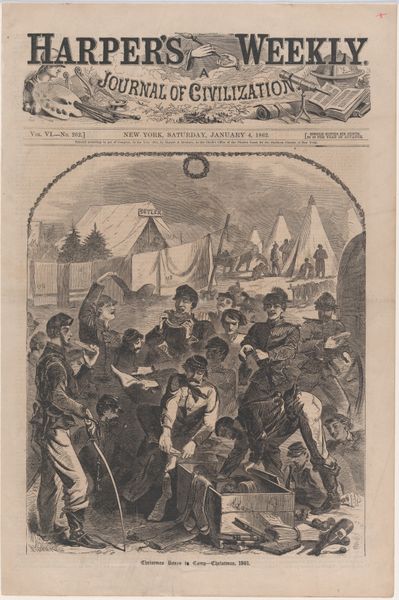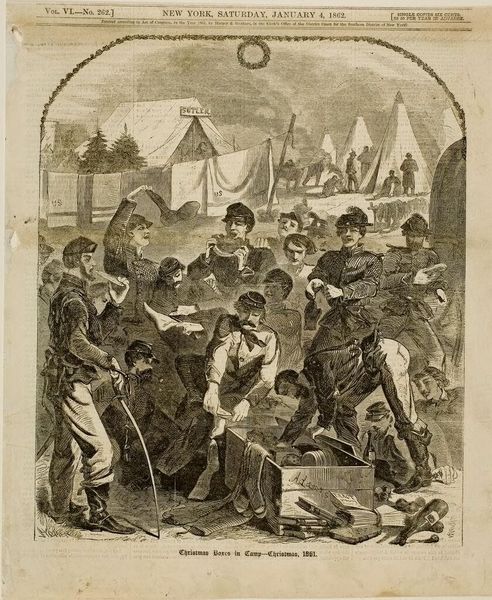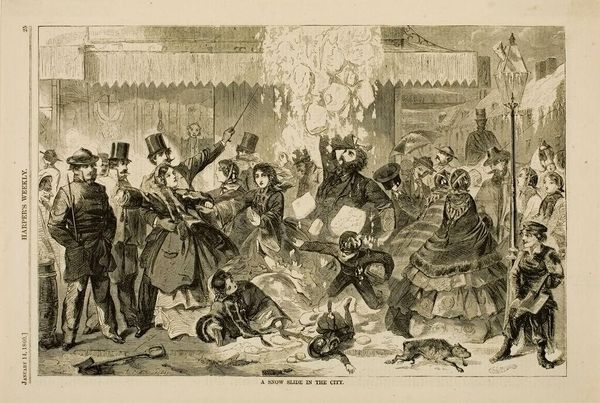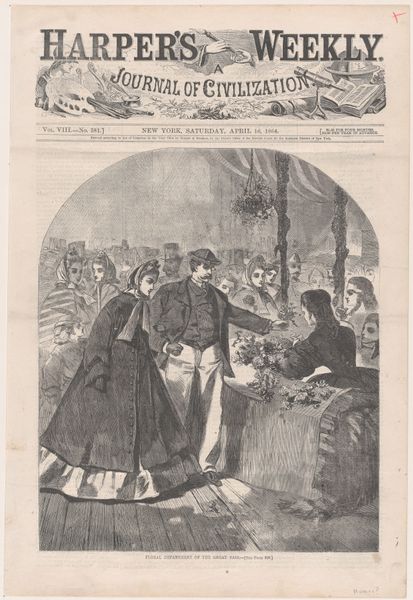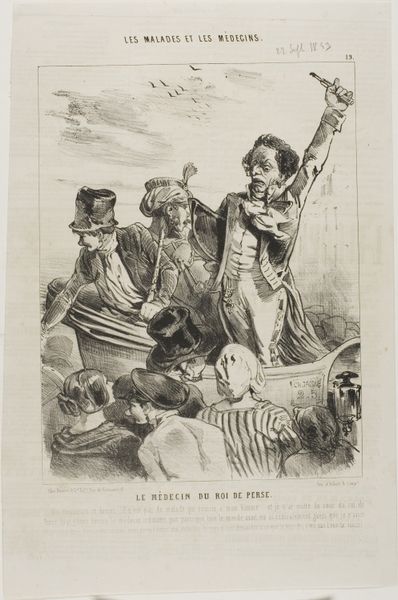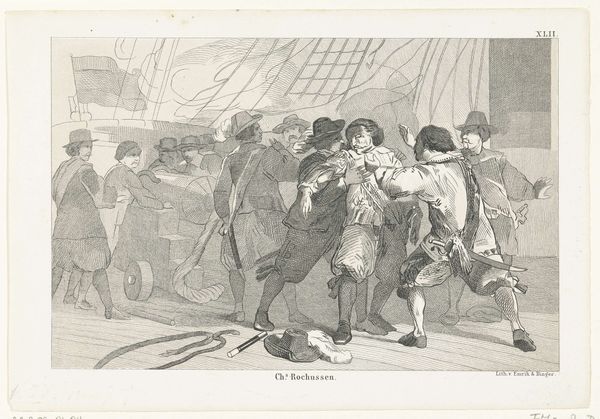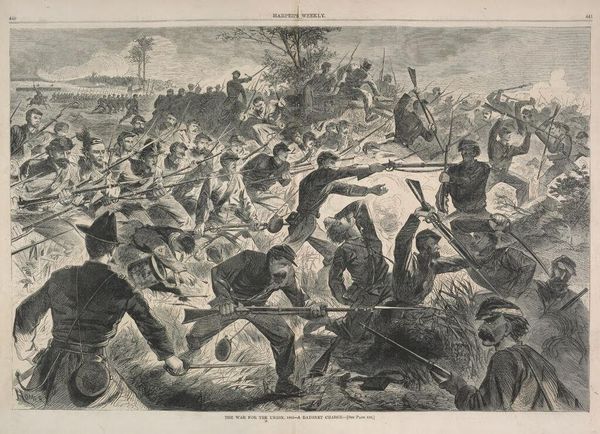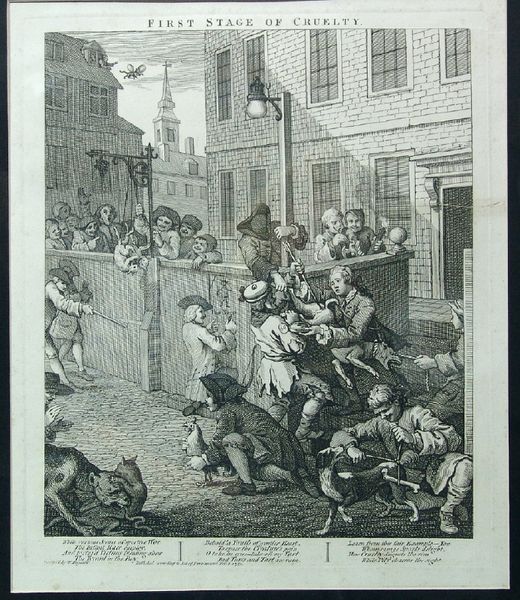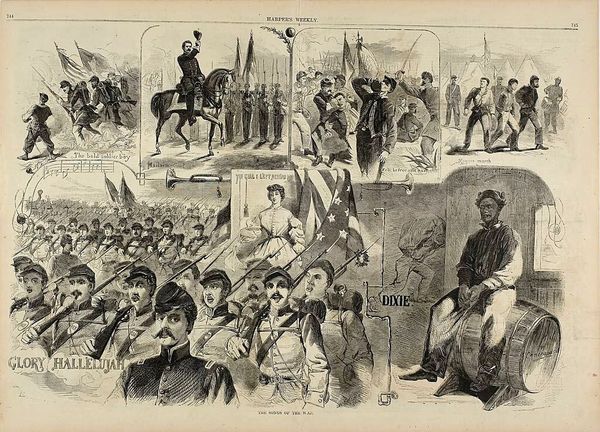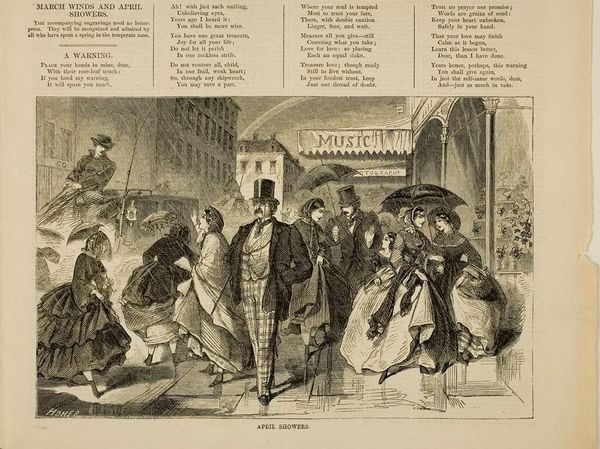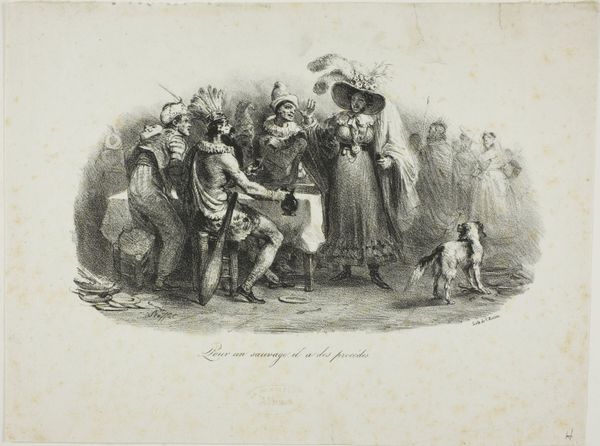
drawing, graphic-art, print, paper, engraving
#
drawing
#
graphic-art
#
narrative-art
# print
#
paper
#
history-painting
#
engraving
Dimensions: 274 × 232 mm (image); 400 × 271 mm (sheet)
Copyright: Public Domain
Editor: So, here we have Winslow Homer’s engraving, “Christmas Boxes in Camp—Christmas, 1861,” likely created around 1862. The sheer number of figures packed into this single print is striking. It feels like Homer is trying to capture the entirety of the Union army’s experience. How do you interpret this work? Curator: It’s more than just a record, isn’t it? Consider the socio-political context. This image, published in *Harper's Weekly*, presented a carefully curated view of the Civil War for a Northern audience. What do you notice about who *isn’t* pictured? The conspicuous absence of enslaved people, the almost sanitized portrayal of army life… Editor: I see what you mean. It seems to reinforce a specific narrative, maybe to bolster support for the Union cause. Curator: Exactly. And the 'Christmas boxes' themselves become a symbol. Think about the role of women on the home front. These packages represented a direct link to loved ones, and a reinforcement of traditional gender roles, even in a time of upheaval. Homer gives visibility to soldiers receiving these boxes in this public print, thus affirming home-front support of the army. What effect would it have if these same soldiers were posed with, say, a Black Union soldier or runaway slave? Editor: It certainly would complicate the narrative. Highlighting the gifts almost sanitizes and romanticizes the realities of war, creating a stark contrast. The act of unwrapping gifts becomes a way to uphold social norms in such a context. Curator: Precisely. It encourages us to critically examine the relationship between art, propaganda, and the construction of national identity during the Civil War. Understanding what the image omits reveals what those in power prioritized for public consumption. Editor: I had not thought about it from a gender perspective before, or how its publication aimed to portray a certain view of the War. I see so much more in this image now. Curator: Right! Seeing is always more than believing; it is questioning.
Comments
No comments
Be the first to comment and join the conversation on the ultimate creative platform.

